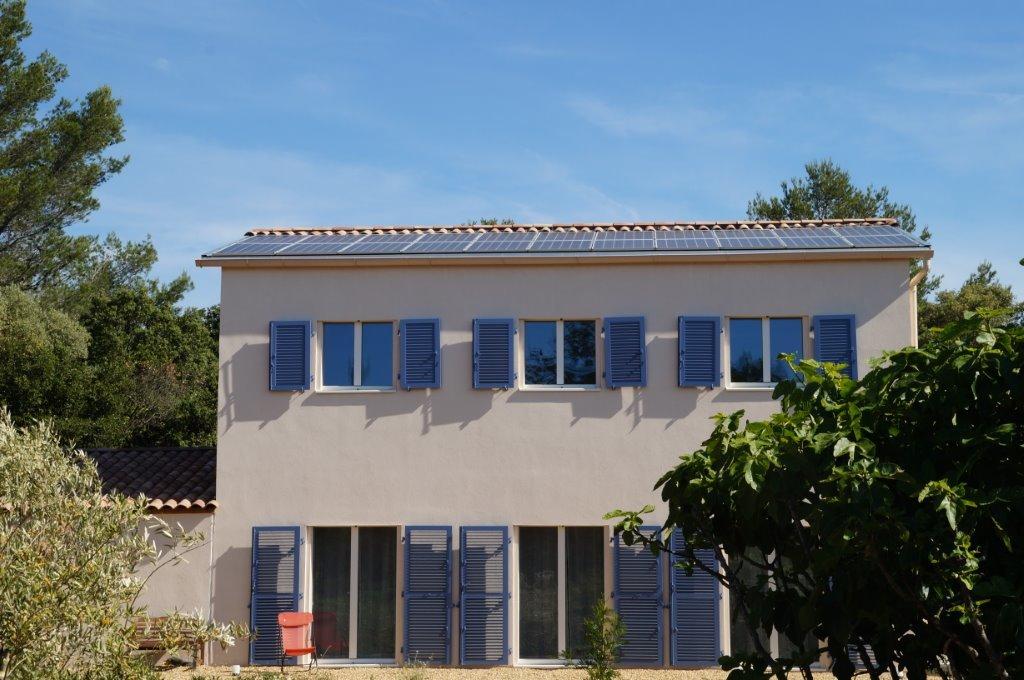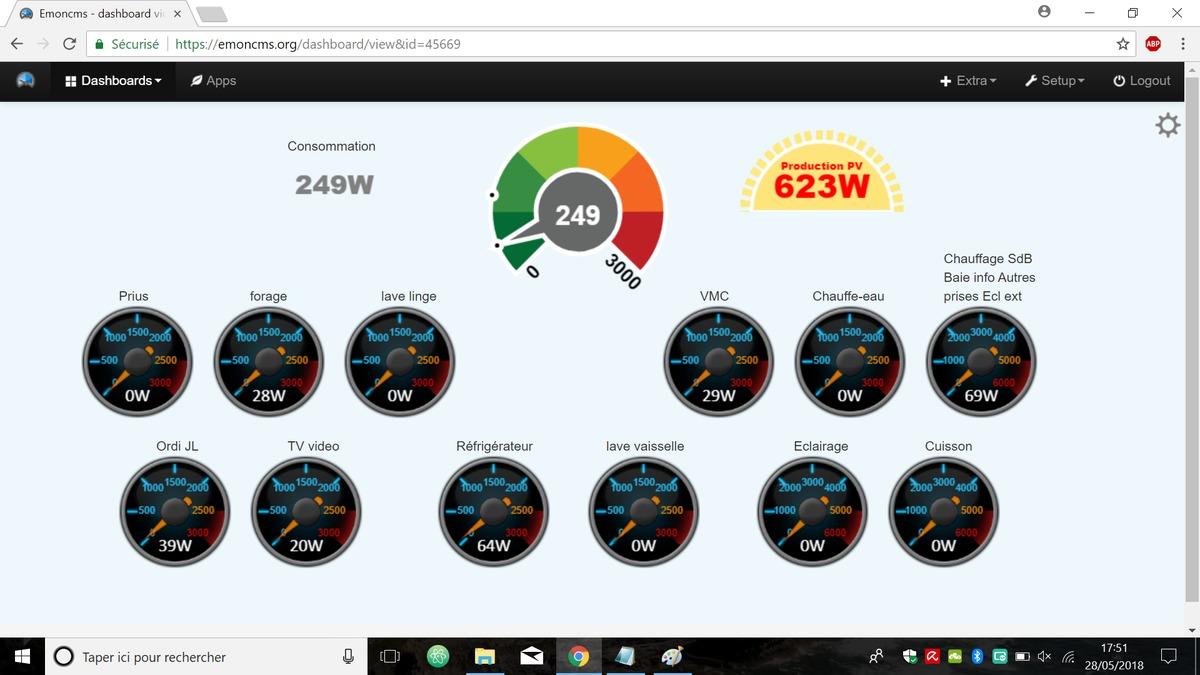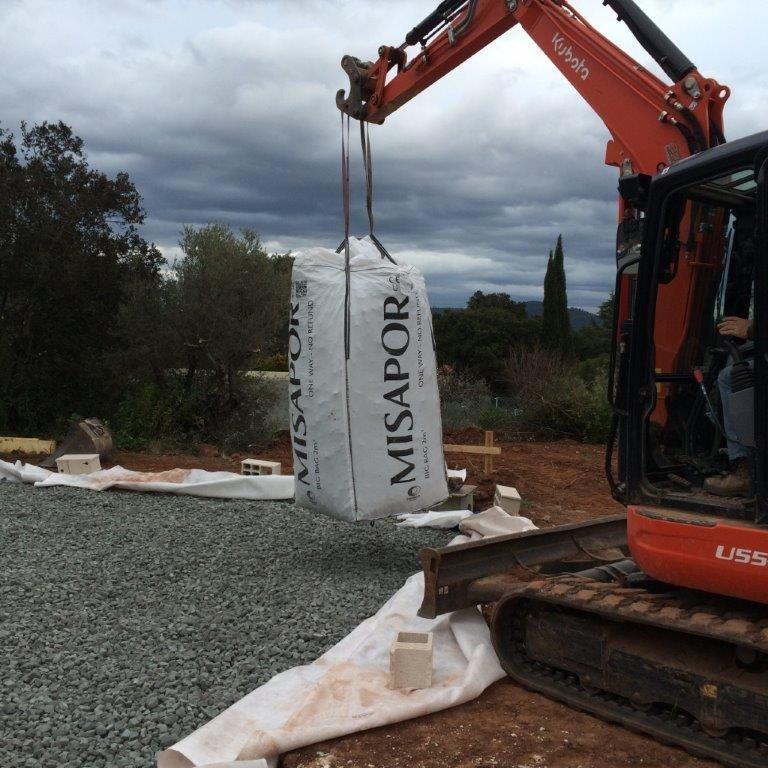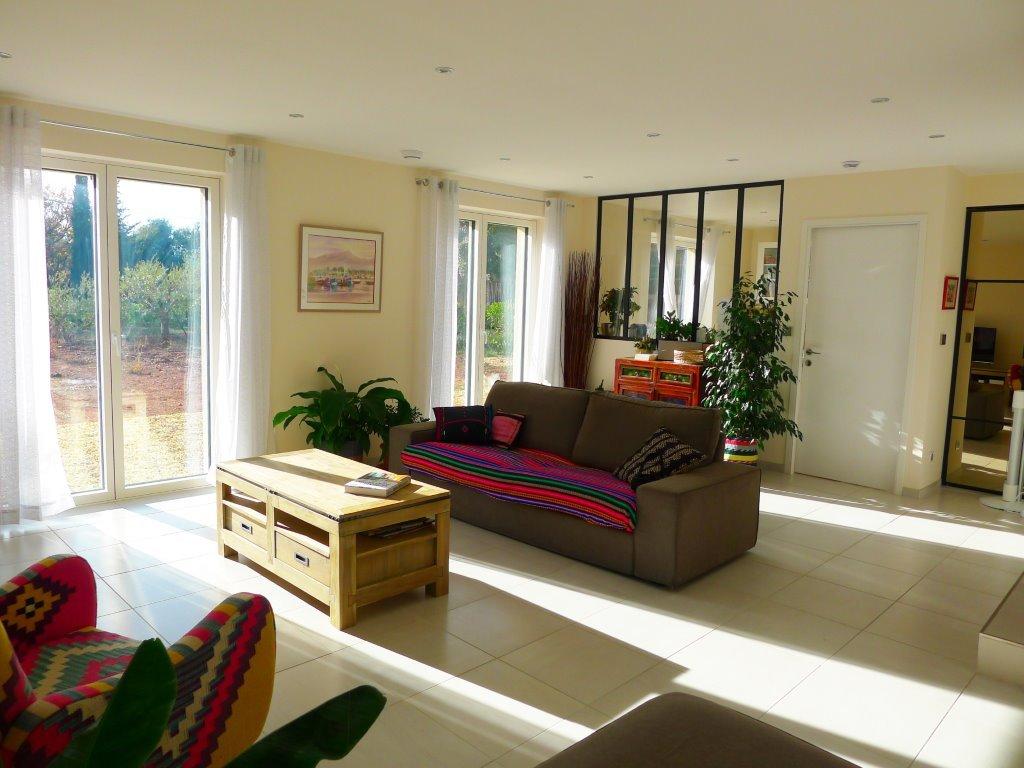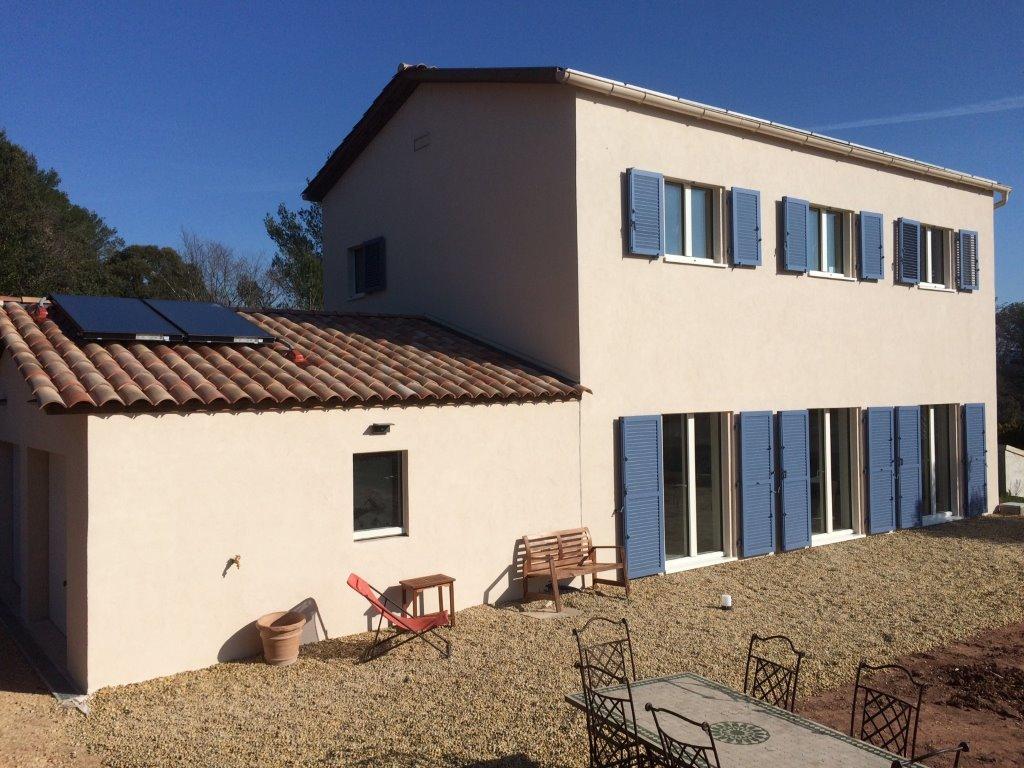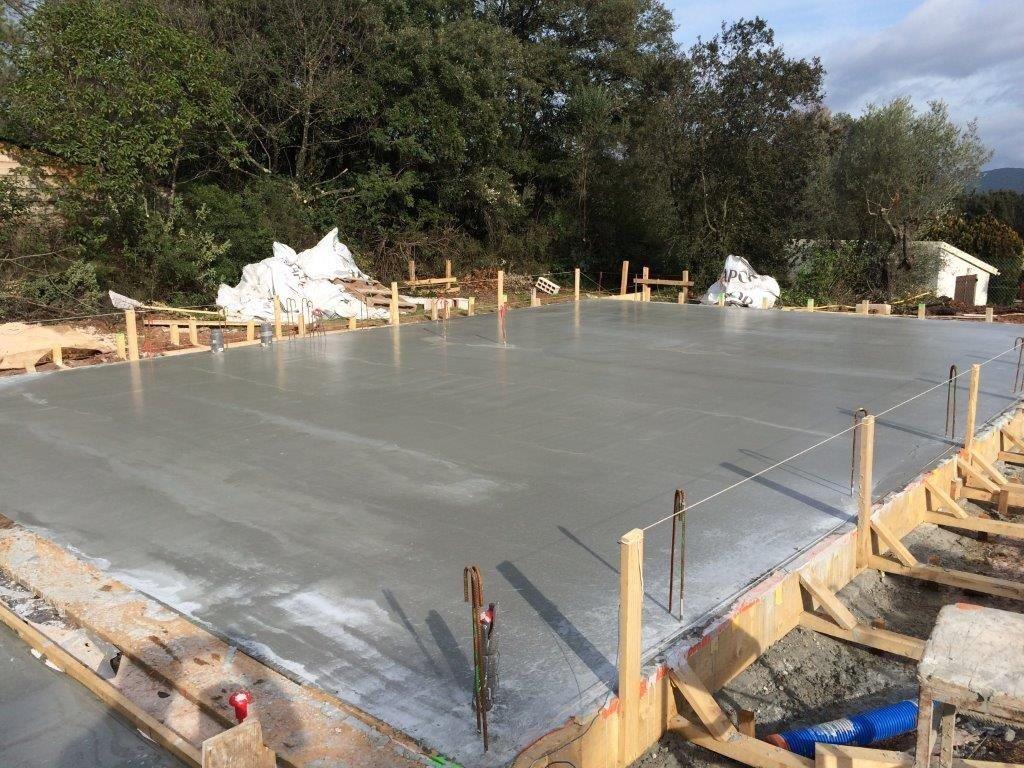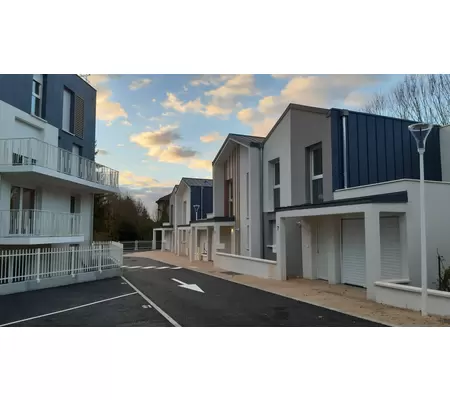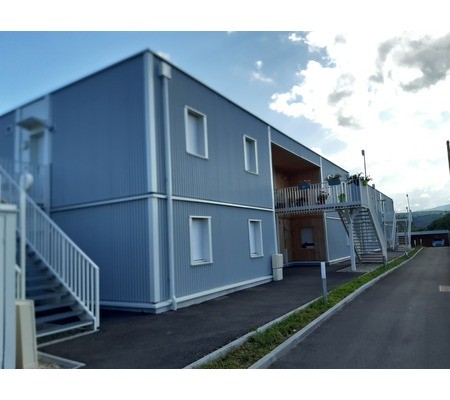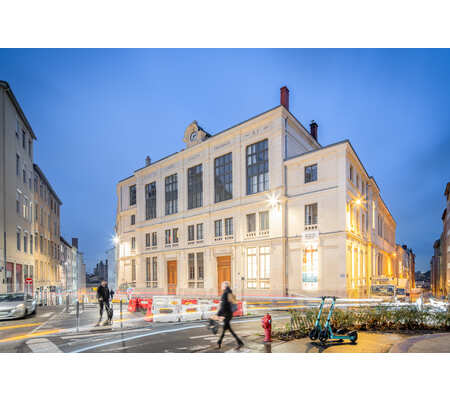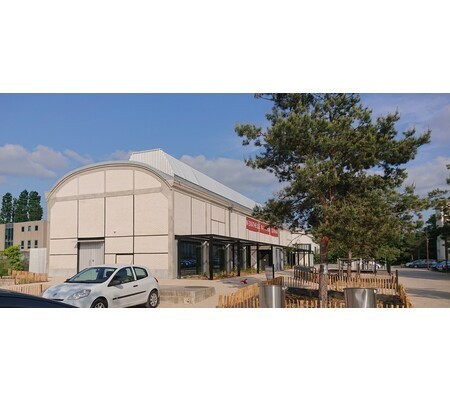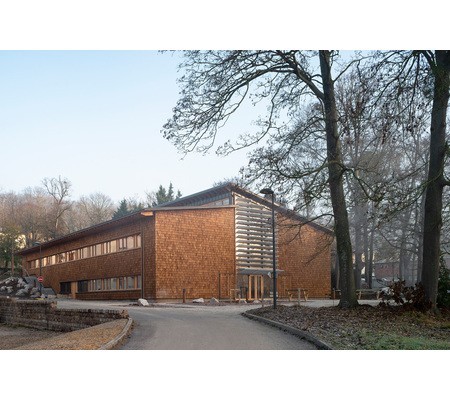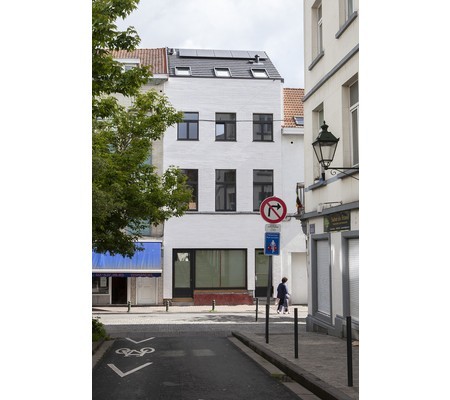First passive house Premium of France
Last modified by the author on 29/05/2018 - 09:49
New Construction
- Building Type : Isolated or semi-detached house
- Construction Year : 2016
- Delivery year : 2017
- Address 1 - street : 83210 SOLLIES-PONT, France
- Climate zone : [Csa] Interior Mediterranean - Mild with dry, hot summer.
- Net Floor Area : 155 m2
- Construction/refurbishment cost : 260 000 €
- Number of Dwelling : 1 Dwelling
- Cost/m2 : 1677.42 €/m2
-
Primary energy need
17.82 kWhep/m2.an
(Calculation method : RT 2012 )
The first certified Premium Passive House in France was created in the Var. No need for any heating or cooling system for this building that produces 4 times more energy than it consumes.
This house shows that it is possible to reconcile architectural quality, very low loads, comfort for the user, compliance with regulations, reduction of energy consumption to reduce the deficit of the balance of trade and reduction of gas emissions. greenhouse effect to preserve the planet. All communities should therefore include the liability in the specifications of their development operations and lead by example by building passive public buildings (schools, colleges, town hall, technical centers, fire stations, sports equipment, etc.). .
To Jean-Louis, who carried this project with all his intelligence and determination
Sustainable development approach of the project owner
The owner, Jean-Louis Bidart, training engineer, wanted a passive house, that is to say, comfortable for his family, with the least possible loads, respectful of the environment and sufficiently productive of solar electricity to recharge its hybrid electric vehicle.
He trained in the PHPP software for calculating the energy performance of passive houses and when in 2015 La Maison Passive proposed the new Passivhaus labels: Plus and Premium labels that integrate renewable energies, his project naturally evolved in this direction: the climatic conditions of the Var, with a high rate of sunshine particularly suitable.
The installation of photovoltaic panels has made it possible to obtain the label "Passif Prémium", the most demanding category of certification.
Architectural description
The house had to fit in perfectly with its surroundings and therefore did not differ from neighboring Provencal houses. It has a living area of 122m². This architectural conformism meets both the wishes of the couple and the urban planning rules of their commune of Sollies-Pont, near Toulon. The criteria of Passivhaus labeling impose a frequency of overheating of only 10% of the time is on a day 2h30 The project made use of the advantages that the land could bring to it, and then optimized the ensemble by implementing building elements derived from the rules of bioclimatism. Passivhaus, such as compactness, orientation, blinds, use of concrete in strategic locations, reflective roofing film, absence of thermal bridge, airtightness of construction, triple glazed joinery, insulation from the outside and an insulation under the slab carrier of the DRC etc .... In addition, the region being the sunniest in France has optimized this data geog by installing photovoltaic panels.Bilan: the house produced, thanks to the installation of 42 m² of photovoltaic panels on its roof and 4 m² of solar thermal panels on the roof of the garage, more energy than its consumption all uses, including the charge of the hybrid car. Over the first period of occupation measured from June to August 2017, very favorable to solar energy balance between production and consumption already shows a surplus of 2744 kWh for 122 m², or 20 kWh / m²hab.
Building users opinion
In addition to the undeniable thermal comfort with the absence of cold wall, humidity, drafts, a pleasant and constant temperature in all rooms of the house, good indoor air quality, energy sobriety induces a a virtuous circle that encourages us to further reduce our electricity consumption, for example with energy-saving plugs, low-power appliances ... and soon a solar oven ...
Beyond the reduction of our energy bill this year the sale of surplus electricity generated by photovoltaic panels should allow us to pay the property tax.
Not to mention the very rewarding feeling of participating in the preservation of the environment!
If you had to do it again?
Alike !
See more details about this project
https://www.construction21.org/france/articles/fr/la-premiere-maison-passive-premium-de-france.htmlhttp://www.lamaisonpassive.fr/la-premiere-maison-passive-premium-de-france/
Contractor
Construction Manager
Stakeholders
Thermal consultancy agency
Heliasol
Thermicien
Type of market
Global performance contract
Energy consumption
- 17,82 kWhep/m2.an
- 37,40 kWhep/m2.an
Real final energy consumption
19,30 kWhef/m2.an
19,30 kWhef/m2.an
2 017
Envelope performance
- 0,19 W.m-2.K-1
- 0,83
- 0,21
More information
No need for heating or air conditioning
Systems
- No heating system
- Solar Thermal
- No cooling system
- Double flow
- Solar photovoltaic
- Solar Thermal
- 384,00 %
Smart Building
Urban environment
- 2 133,00 m2
- 143,00 %
Product
VMC double flux NOVUS 300 DC (Paul)

PAUL Wärmerückgewinnung GmbH
ZENDHER GROUP France, 3 rue du Bois Briard BP 60136 F-91021 Evry Cedex
https://www.zehnder.frGénie climatique, électricité / Ventilation, rafraîchissement
The waterproofing of the passive house requires a powerful ventilation system to ensure the renewal of air. A VMC with heat recuperator is essential in winter as well as in hot weather and also allows to recover 93 percent of the calories of the air released in winter and avoid overheating in summer.
The Novus 300/450 comfort ventilation system has been developed specifically for use in demanding residential buildings ranging from T3 to T5 with a maximum surface area of 350 m². It has a volume flow range of 45 to 300 m³ / h (Novus 300) or 50 to 450 m³ / h (Novus 450). With an IHP certified heat efficiency of 93% and energy efficiency of 0.24Wh / m³, it is currently the ideal model for the passive housing sector.
The night cooling for pleasant ambient air is ensured by an automatic summer bypass regulation with 100% motorized flap. A built-in 1.3 kW modulated power defrost damper ensures frost protection, an enthalpy heat exchanger allows additional moisture recovery (both optional). The ventilation units are equipped with constant flow fans with balancing, the regulation allows the automatic mode according to the time or the need.
The cost is about 6400 euros.
The occupants were able to appreciate the air quality provided by the dual flow ventilation. The device is also very quiet, and also meets Passiv'Haus certification criteria.
SmartWin Joinery
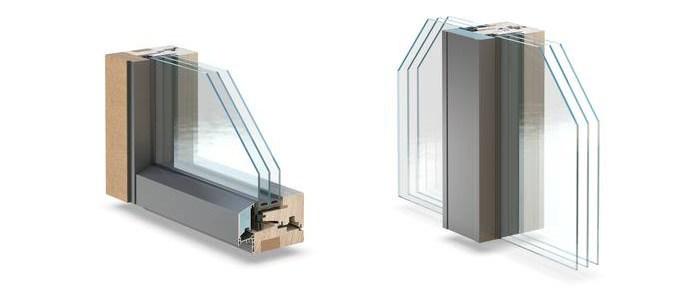
Menuiserie ANDRE
Menuiserie ANDRE, 163 route de Chantemerle les Blés F-26260 Chavannes. Tel : 04 75 71 14 01
http://www.andre-menuiserie.frSecond œuvre / Menuiseries extérieures
A high-quality window is an indispensable building element for passive constructions, the requirements of thermal comfort implying a high quality of insulation.
The SmartWin is a passive Class A window, certified by the Passivhaus Institute, a mixed wood / aluminum window.
Performance: complete insulation of the frame eliminating the installation thermal bridge.
Basic, triple glazed low-emitting argon filling 48mm (4/18/4/18/4) with a Ug = 0.53 W / mK and a solar factor of 53.
Uw = 0,65W / m2K
The triple glazing also allows in very sunny areas to ensure a better summer comfort.
Cost: about 12600 euros
MISAPOR
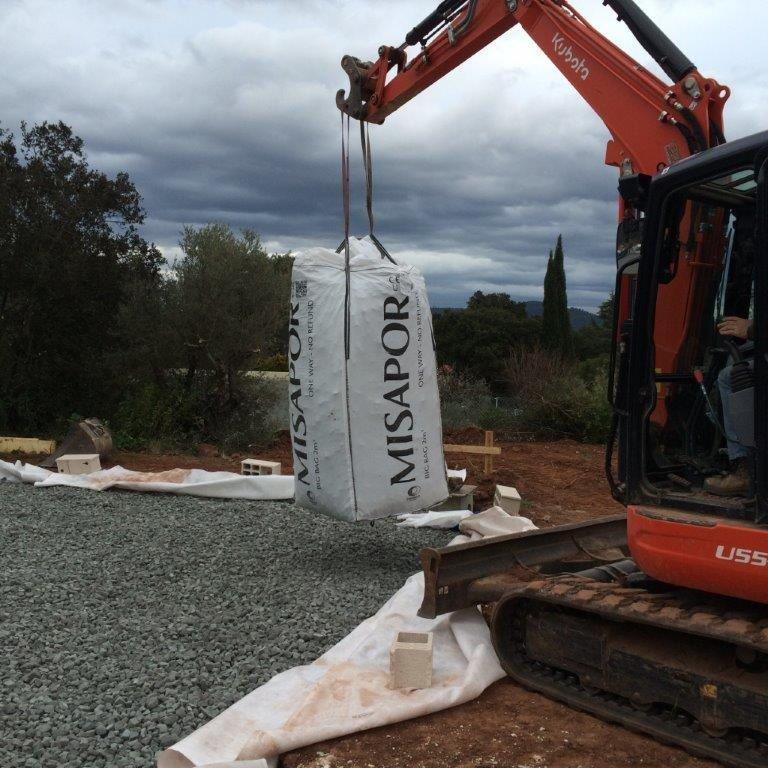
MISAPOR AG
http://www.misapor.comSecond œuvre / Revêtements de sol
Cellular granulate insulating cell fill, it is used as a replacement for embankment under the raft: on this site layer of 30 cm. It is a very interesting product in passive construction because it eliminates the thermal bridges, stabilizes the construction surface, moreover does not fear termites or rodents, it also allows to reduce the time of construction and respects the environment (material ecological).
Coefficient of thermal conductivity lambda of 0.120W / m.K
Cost: 5800 euros
In general, to change building habits, participating in this project has been rewarding and rewarding for all the craftsmen who have gained experience, discovered new materials and more efficient construction techniques.
Swing shutter with extrusions
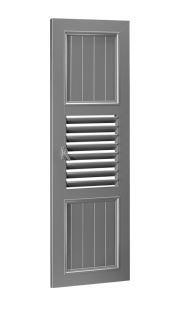
EHRET GmbH Bahnhofstrasse 14-18 D-77972 Mahlberg tel +49(0)78224390
http://www.ehret.comSecond œuvre / Menuiseries extérieures
In hot weather shutters with adjustable blades contribute to thermal comfort: during the day, solar radiation is stopped by closed shutters, but the brightness is maintained by the adjustable blades of the shutters. At night, the windows are wide open to naturally ventilate the house with the cool night air, through shuttered blinds for security. This fresh air allows structures with high inertia to destock the heat stored during the day and radiate the day the freshness acquired during the night.
Cost: about 6700 euros
In order to avoid the wind resistance of sunshade (BSO), the choice fell on adjustable shutters. This also allowed a better compliance with the type of architecture and offered a guarantee of security when windows are opened wide to optimize the night ventilation essential to summer comfort.
ROTEX SANICUBE SCS 328/14/0 DB
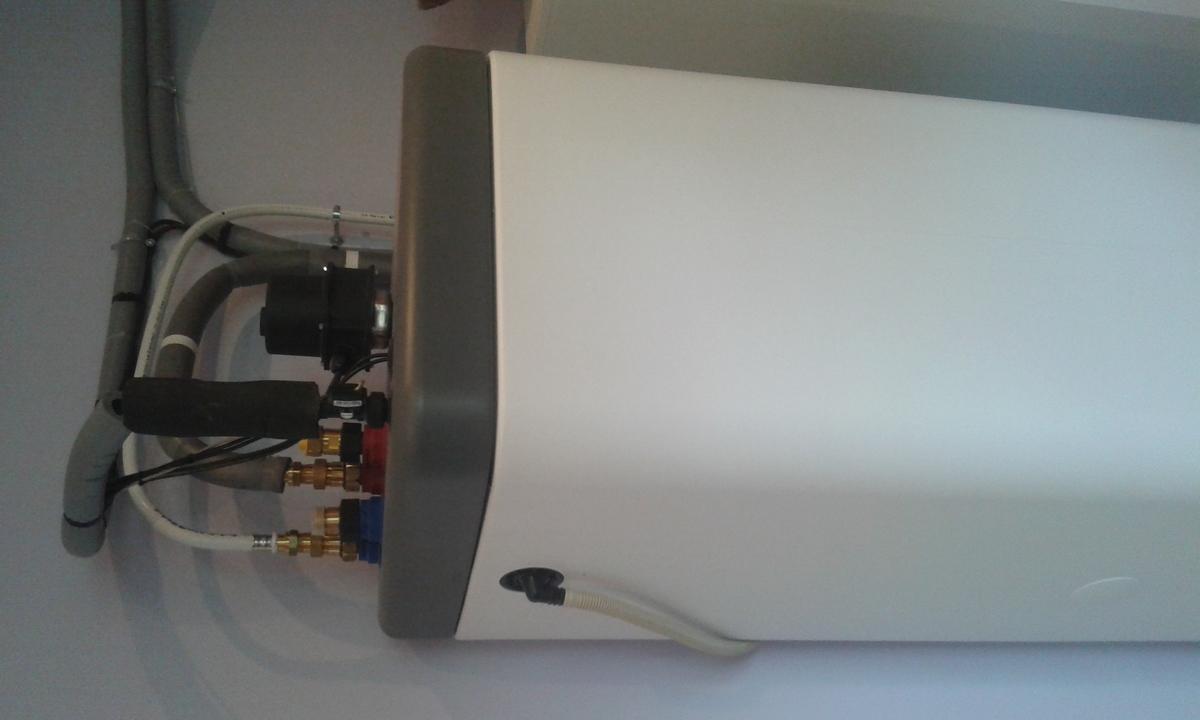
DAIKIN
http://www.daikin.frGénie climatique, électricité / Chauffage, eau chaude
Opting for a solar water heater completed the eco-friendly approach. The risk of overheating during sunny periods has been solved with the choice of a self-balancing system.
Solar hot water system type drainback.
Capacity of the balloon: 300L
2 sensors V21P surface sensor 4m²
Optical efficiency of the sensor B = 0.8
Coefficient of thermal losses 4,86W / (m².K)
Allows a hot water coverage of the home about 80%
Cost: about 6200 euros
System performance.
Construction and exploitation costs
- 15 000,00 €
- 4 000 €
- 320 000 €
Indoor Air quality
Comfort
Life Cycle Analysis
Reasons for participating in the competition(s)
- The first undeniable advantage of this house is the reduction of expenses. A reduction of nearly 90% in the amount of heating costs can represent significant sums for households. To build in liabilities is also to guarantee oneself of all energy poverty.
- Certainly build in liabilities requires more in-depth design work and rigorous site monitoring. If winter comfort in passive house is no longer in doubt, summer comfort remains a subject to be deepened. The Passivhaus labeling criteria impose an overheating frequency of only 10% of the time above 25 ° C. But the examples of passive certified buildings in the world and especially in hot countries like Dubai or Morocco (embassy of Belgium in Rabat for example) are more and more numerous and show that it is possible (See tertiary passive buildings and New ecological architectures published by Editions du Moniteur).
- To meet the constraints of passive construction, the designer of this house has used the benefits that the land could bring him, then he optimized the set by implementing building elements derived from the rules of bioclimatism and Passivhaus, such as compactness, orientation, shutters-louvers positioned outside, the use of concrete in strategic locations, the installation of a reflective film on the roof, the waterproofing air reaching in n50: 0.21 v / h, a design without thermal bridge, an insulation by the outside, a VMC double flux with 93% of recovery of heat etc ... All this made it possible to reach exceptional performances.
- At first glance, this house looks like neighboring Provencal houses. Yet in this ordinary appearance hides a jewel in terms of comfort and performance, with a need for reduced heating to 1 kWh / (m².an) and a primary energy requirement of 54 kWh / m².an for heating, l hot water, lighting, ventilation and auxiliaries (according to the PHPP software essential to Passivhaus certification and recognized as reliable by all experts, unlike the calculation engine of the French thermal regulation, the TH- ECB).
- In addition, thanks to 42 m² of photovoltaic panels and 4 m² of solar thermal panels, this house produces 4 times more energy than it consumes all uses (including the load of the hybrid car). This is a particularly interesting advantage in a region with a large deficit in electricity supply.
- In addition, French thermal regulations will impose the Bepos (positive energy building) on all buildings in 2020. When energy needs are low, some photovoltaic panels are enough to become Bepos (positive energy building). The saving made on photovoltaic panels makes sense and compensates for the additional cost of passive construction.
Building candidate in the category
Energie & Climats Tempérés

Coup de Cœur des Internautes





